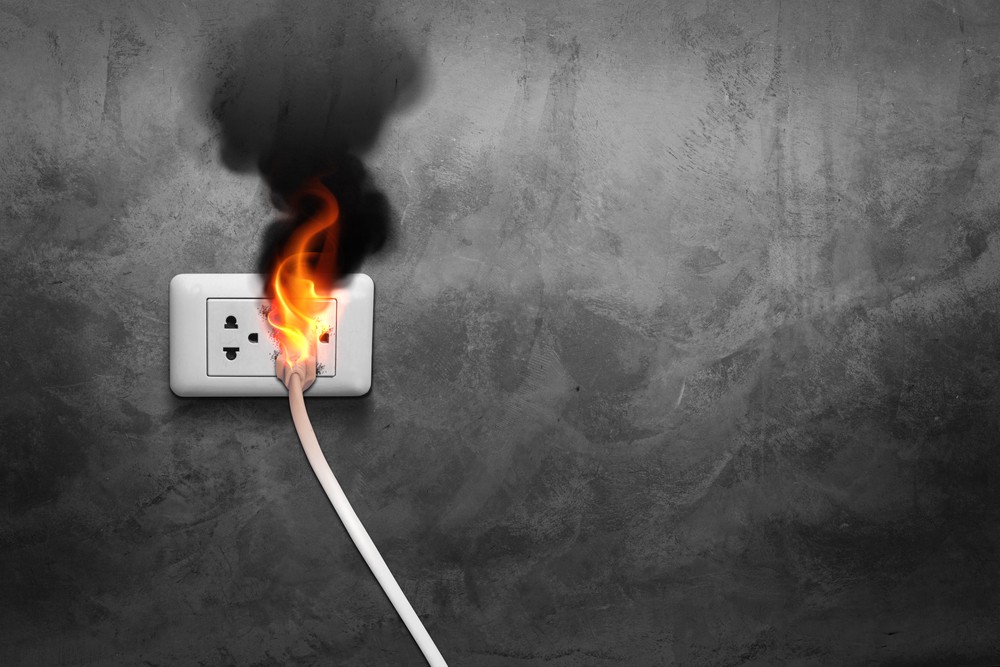In a fast-paced business environment, the last thing anyone needs is an electrical short circuit disrupting daily operations. The potential for short circuits is ever-present, but with proper precautions, businesses can ensure a safe and uninterrupted work environment. In this blog post, we will delve into the causes of short circuits within commercial and office buildings and explore effective measures to prevent them. MTA is here to empower businesses with the knowledge to safeguard their success.
Understanding Short Circuits
A short circuit occurs when an electrical current deviates from its intended path, taking a shortcut and bypassing the normal route. In commercial and office buildings, the consequences can be severe, ranging from minor inconveniences to catastrophic events. Common causes of short circuits include faulty wiring, damaged appliances, overloaded circuits, and outdated electrical systems.
What Causes Short Circuits?
- Insulation Defects: In the intricate network of electrical wiring within commercial spaces, insulation plays a pivotal role. The electric wires are encased in insulating layers made from materials like Polyvinyl Chloride (PVC), Polyethylene (PE), or Nylon. This insulation is designed to prevent electric conduction to other materials. However, constant wear and tear or faulty insulation can compromise this protective layer, leading to the live and neutral wires making contact and causing a short circuit. The breakdown of insulation integrity is a primary contributor to short circuits in commercial settings.
- Loose Connections: A prevalent example of short circuits in office spaces arises when electrical connections become loose. The gradual loosening of attachments creates a scenario where two wires touch, resulting in a short circuit. Maintaining secure and properly connected electrical components is crucial to mitigating the risk of such occurrences.
- Pest Infestations: In commercial buildings, blame for short circuits often points to rodents. Creatures like mice and rats, if present, can pose a significant threat. These pests have the ability to gnaw through the insulating layer of electric wires, exposing the metal wire beneath. Such exposure increases the likelihood of a short circuit, emphasizing the importance of pest control measures in commercial spaces.
- Damaged Appliances: A substantial contributor to short circuits in commercial wiring systems is the presence of damaged electronic appliances. Whether due to regular wear and tear, or specific damages incurred, malfunctioning appliances can develop faults in their wiring, leading to short circuits. Identifying and addressing issues with electronic devices becomes crucial in preventing electrical disruptions within a commercial setting.
How to Prevent Short Circuits
1. Regular Outlet Checks: Regular scrutiny of electrical outlets and switches constitutes a fundamental, yet highly effective, strategy in the ongoing battle against short circuits. By incorporating a routine inspection schedule, businesses can swiftly identify compromised components displaying signs of wear and tear.
Common culprits of short circuits include flawed wiring, loose connections within the box, and aging outlets. Diagnosing these issues might prove challenging due to their concealed nature behind walls. However, proactive steps can be taken to prevent short circuits by inspecting outlets before each use. Keep an eye out for specific warning signs that may indicate an outlet is susceptible to a short circuit:
- Outlet has burn marks or burning smell.
- Buzzing or popping sound coming from outlet.
- Sparks emitting from outlet.
- Outlet is more than 15-25 years old.
In the event of damage, immediate replacement is crucial in preempting any potential short circuit. Additionally, a meticulous examination should be conducted to verify that all connections are securely in place. This should eliminate the risk of loose connections becoming a contributing factor to electrical issues.
2. Appliance Inspection: Acknowledging the pivotal role played by office appliances, organizations must adhere to a regular inspection schedule and ongoing maintenance. Through periodic assessments of office equipment, teams can promptly identify and address issues such as frayed cords, exposed wires, or malfunctioning components. Employees should be actively encouraged to report any damaged appliances promptly, fostering a collective responsibility for the safety and functionality of the workplace's electrical infrastructure.
3. Circuit Breaker Maintenance: Positioned as the primary line of defense, circuit breakers demand consistent attention to maintain optimal functionality. Regular inspections and testing are essential components of a robust preventative maintenance strategy. A circuit breaker that trips frequently might indicate an underlying problem, necessitating the expertise of a qualified electrician. Timely maintenance not only ensures the reliability of the circuit breaker, but also reinforces its critical role in preventing short circuits.
4. Proper Wiring Practices: The integrity of the electrical system relies heavily on well-organized and expertly installed wiring. Mitigating the risk of short circuits involves a commitment to avoiding circuit overloads. For example, if colored wires between the plug and the protective outer cover of a power cord is observed, replace the appliance or have it rewired.
Businesses should also ensure the even distribution of electrical loads, preventing any one circuit from shouldering an excessive burden. In instances of office expansion or renovations, collaboration with a qualified party becomes imperative. At MTA, our experts will ensure that your new installation adheres to the highest safety standards, fortifying the entire electrical infrastructure against potential vulnerabilities.
5. Scheduled Annual Electrical Inspections: Businesses should prioritize safety and schedule annual electrical testing and inspections as a cornerstone of their preventive maintenance measures. Professional electricians, armed with their expertise, can conduct comprehensive assessments of the electrical system. This proactive approach allows for the identification of potential issues before they escalate, mitigating risks and ensuring the sustained health of the infrastructure. From identifying red flags to recommending necessary repairs or upgrades, these annual inspections contribute significantly to the overall safety and reliability of the workplace's electrical framework.
Contact a Professional
By embracing these proactive steps, businesses pave the way for a work environment that is not only secure, but also conducive to sustained productivity. Regular checks on electrical outlets ensure that potential hazards are identified and repaired promptly, mitigating the risk of sudden disruptions. Appliance inspections, coupled with a culture of reporting and replacing damaged equipment, instill a sense of collective responsibility among employees, fostering a safer workplace culture.
The commitment to scheduled annual electrical inspections represents a forward-thinking approach, wherein potential issues are identified before they escalate into significant disruptions. Professional electricians, equipped with their expertise, become invaluable partners in assessing the overall health of the electrical system, identifying red flags, and recommending necessary enhancements. This proactive stance not only prevents short circuits but also aligns businesses with the highest standards of electrical safety.
The implementation of these preventive measures is not merely a safeguard against short circuits; it is an investment in the long-term success and resilience of the business. A secure and productive work environment is not only a testament to a company's commitment to its employees' well-being, but also a foundational element for sustained growth. Through regular checks, proper maintenance, and an unwavering commitment to electrical safety, businesses not only protect their valuable assets but also ensure that their journey towards success remains uninterrupted and flourishing.
Visit MTA now to explore a comprehensive range of electrical testing solutions in California tailored for industrial and commercial settings as well as office and retail buildings. From preventive maintenance to cutting-edge safety measures, MTA is your partner in ensuring a secure and uninterrupted work environment. Don't wait for disruptions – empower your business with the knowledge and expertise available at MTA. Contact us to safeguard your success today!

